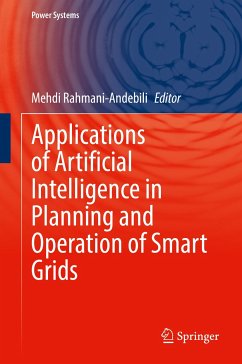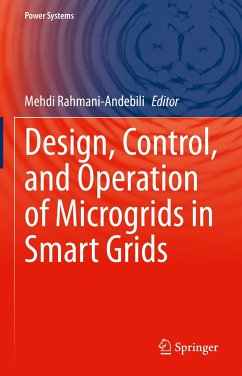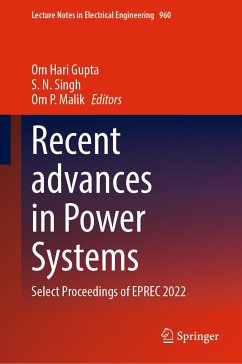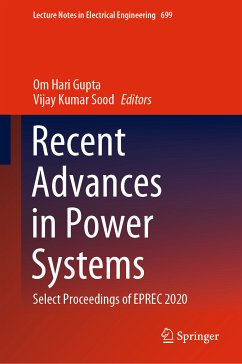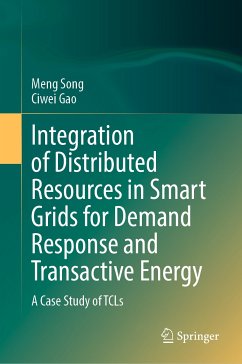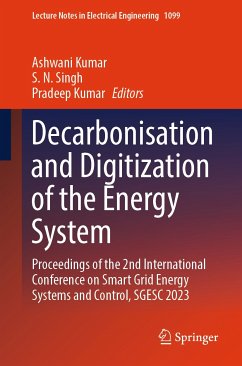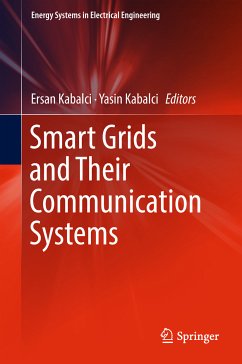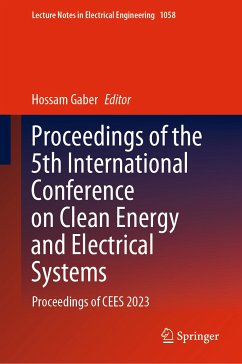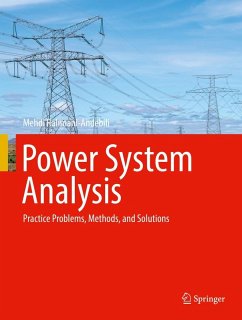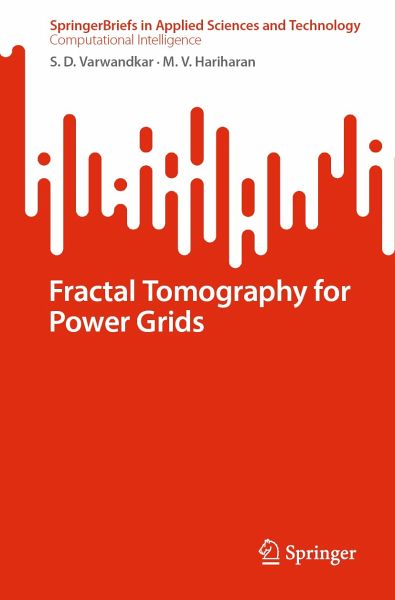
Fractal Tomography for Power Grids (eBook, PDF)
Versandkostenfrei!
Sofort per Download lieferbar
40,95 €
inkl. MwSt.
Weitere Ausgaben:

PAYBACK Punkte
20 °P sammeln!
The book introduces a new concept of Fractal Tomograph (FT) to study large and small perturbations of power grids. A mathematical phrase called Active Network Twins (ANT) is discovered which bears astonishing similarity with the human DNA. ANT forms the backbone of analysis. Lineflows and load voltages are compositions of ANT, called fractals which constitute tomographs. First three chapters discuss these new concepts. A remarkable feature is that a minute observation of tomograph is sufficient to detect a malaise in the past, present, or future of the grid. Editing like in genes, to control f...
The book introduces a new concept of Fractal Tomograph (FT) to study large and small perturbations of power grids. A mathematical phrase called Active Network Twins (ANT) is discovered which bears astonishing similarity with the human DNA. ANT forms the backbone of analysis. Lineflows and load voltages are compositions of ANT, called fractals which constitute tomographs. First three chapters discuss these new concepts. A remarkable feature is that a minute observation of tomograph is sufficient to detect a malaise in the past, present, or future of the grid. Editing like in genes, to control flows and voltages, is explained in chapter 4. The baffling loop flows in the US-Canada region, a metropolitan blackout in India, and outages in Nepal are illustrated with notional networks. Causes are crisply identified (chapters 5 and 6). Frequency rendezvous and blockchain approach to electricity costs (chapters 7, 8) are radically new perspectives. The book is useful for grid controllers and researchers.
Dieser Download kann aus rechtlichen Gründen nur mit Rechnungsadresse in A, B, BG, CY, CZ, D, DK, EW, E, FIN, F, GR, HR, H, IRL, I, LT, L, LR, M, NL, PL, P, R, S, SLO, SK ausgeliefert werden.



